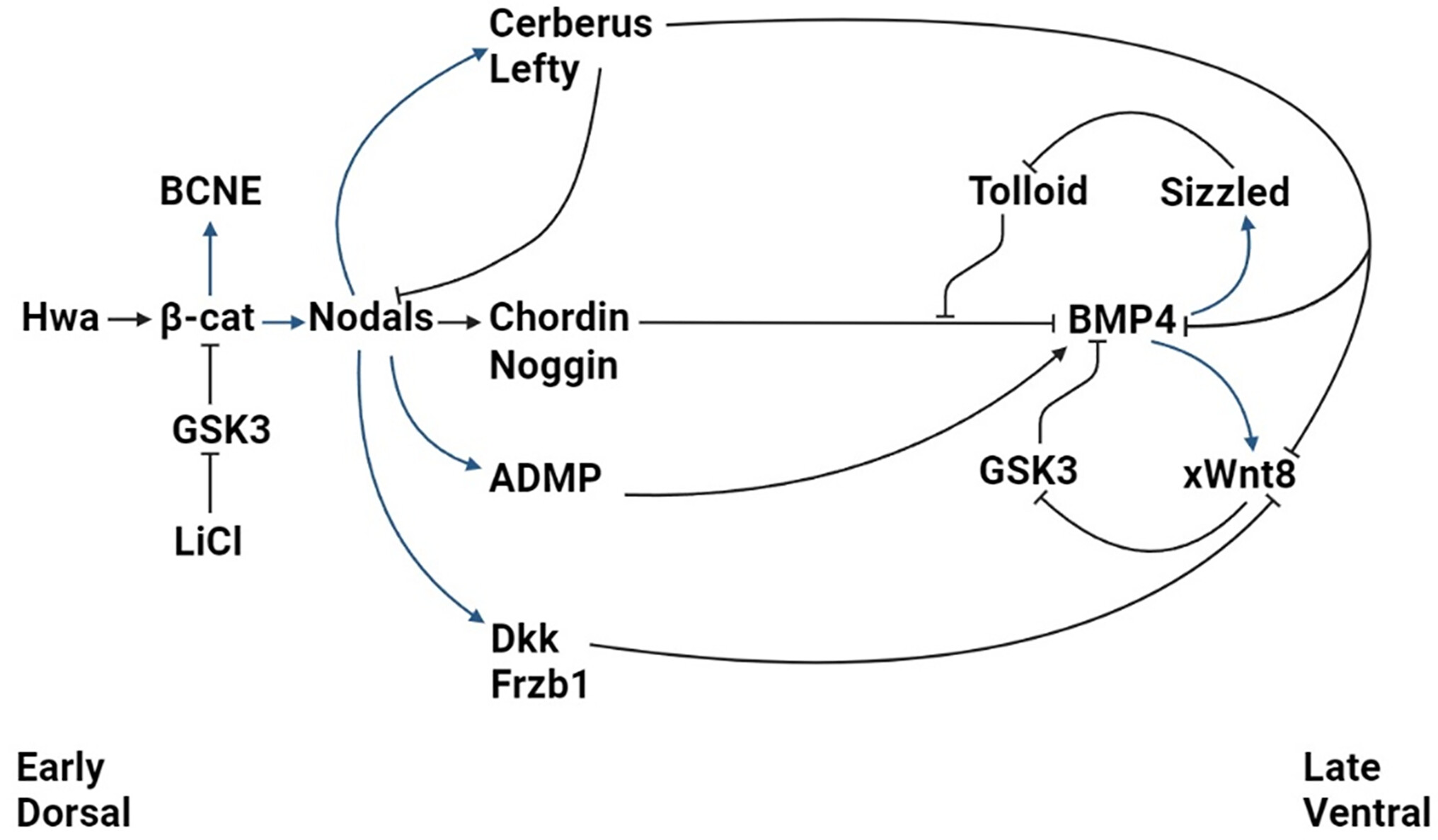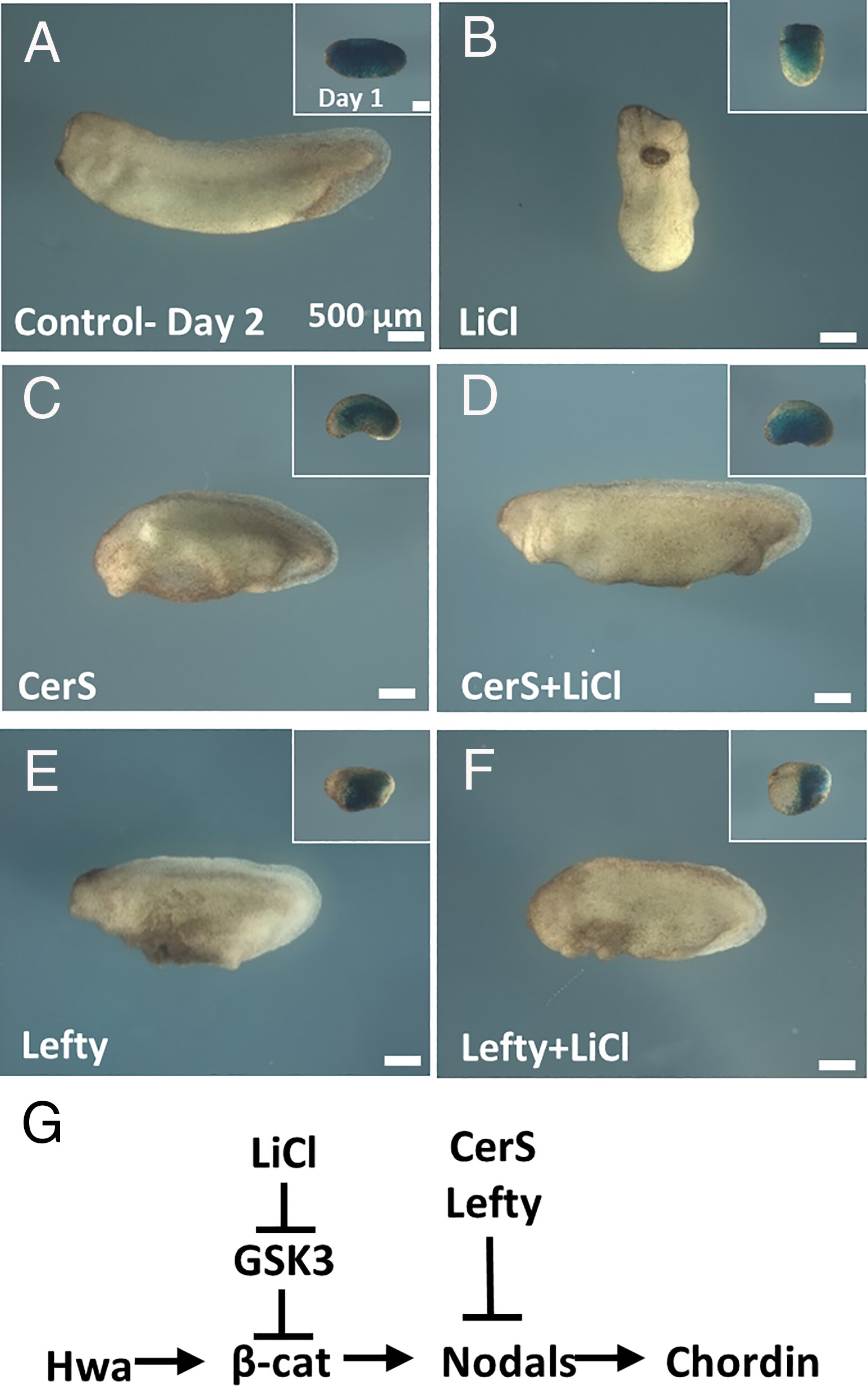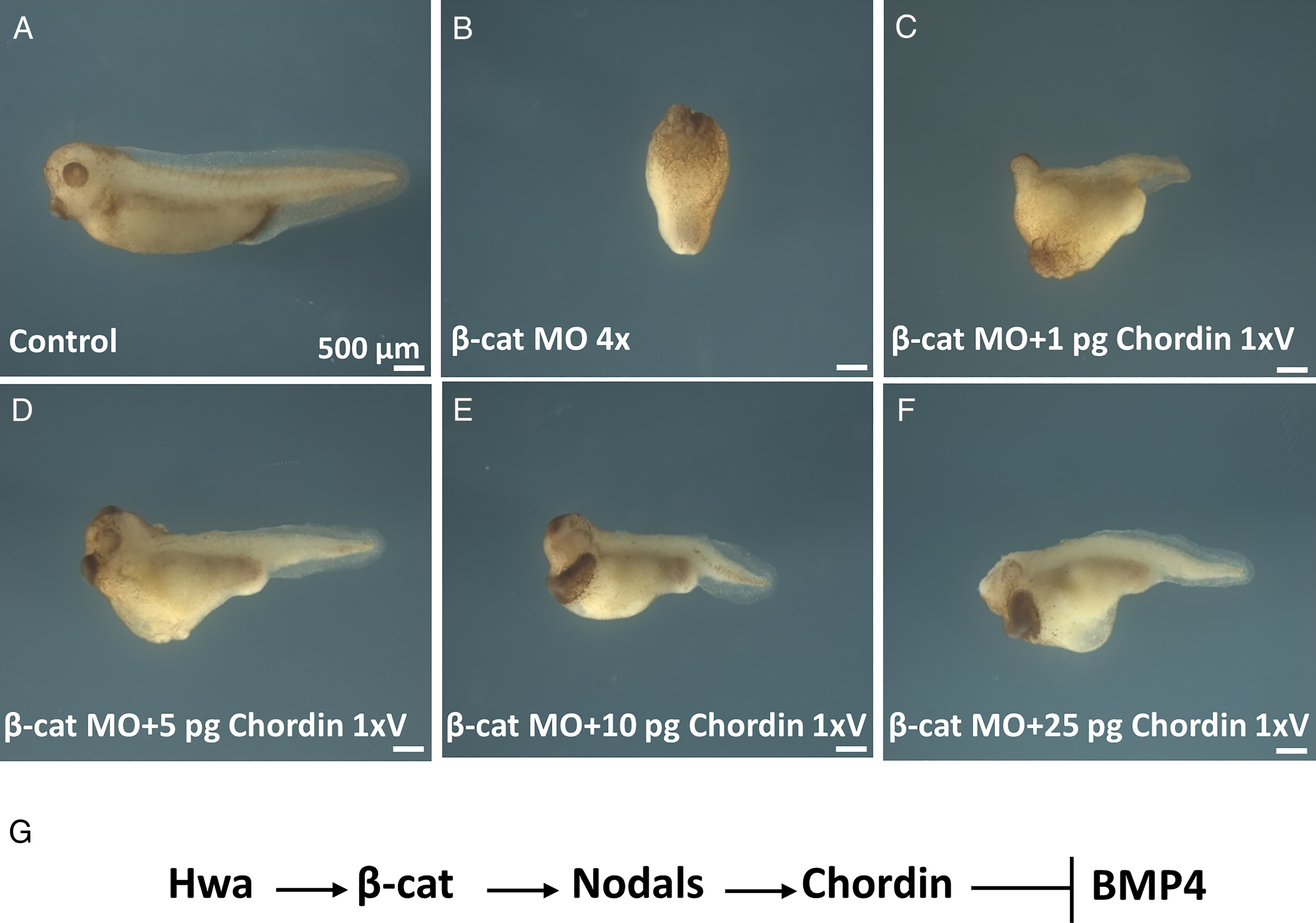The Spemann-Mangold organizer from egg to tailbud
Molecular analysis of a self-organizing signaling pathway for Xenopus axial patterning from egg to tailbud
Proc Natl Acad Sci U S A 2024 Jul 09;12128:e2408346121. doi: 10.1073/pnas.2408346121.
Azbazdar Y, De Robertis EM.
Click here to view article at the Proceedings of the National Academy of Sciences.
Click here to view article at Pubmed.
Click here to view article on Xenbase.
Xenopus embryos provide the premier system to dissect the sequential steps that lead to the development of the vertebrate body axis. The first event is the function of the maternal dorsal determinant Huluwa, a new gene discovered in the Toa and Meng labs at Tsinghua University, China (see Yan et al 2018, PubMed ID: 30467143). Huluwa (hwa) stabilizes cytoplasmic β-catenin by promoting Axin1 degradation. Here, Azbazdar and De Robertis combined overexpression of hwa mRNA into a ventral cell with coinjection of known components of the Spemann-Mangold organizer to dissect the biochemical pathway of axial development. Several unexpected findings emerged from these embryological experiments. For example, well-patterned complete embryonic axes are induced by Nodal or Chordin microinjection in β-catenin depleted embryos, dorsalization by LiCl is mediated by Nodals, and the Wnt antagonist Dickkopf 1 strongly synergizes with Huluwa at a later stage of development by modifying the BMP signal.
Abstract
Xenopus embryos provide a favorable material to dissect the sequential steps that lead to dorsal-ventral (D-V) and anterior-posterior (A-P) cell differentiation. Here, we analyze the signaling pathways involved in this process using loss-of-function and gain-of-function approaches. The initial step was provided by Hwa, a transmembrane protein that robustly activates early β-catenin signaling when microinjected into the ventral side of the embryo leading to complete twinned axes. The following step was the activation of Xenopus Nodal-related growth factors, which could rescue the depletion of β-catenin and were themselves blocked by the extracellular Nodal antagonists Cerberus-Short and Lefty. During gastrulation, the Spemann-Mangold organizer secretes a cocktail of growth factor antagonists, of which the BMP antagonists Chordin and Noggin could rescue simultaneously D-V and A-P tissues in β-catenin-depleted embryos. Surprisingly, this rescue occurred in the absence of any β-catenin transcriptional activity as measured by β-catenin activated Luciferase reporters. The Wnt antagonist Dickkopf (Dkk1) strongly synergized with the early Hwa signal by inhibiting late Wnt signals. Depletion of Sizzled (Szl), an antagonist of the Tolloid chordinase, was epistatic over the Hwa and Dkk1 synergy. BMP4 mRNA injection blocked Hwa-induced ectopic axes, and Dkk1 inhibited BMP signaling late, but not early, during gastrulation. Several unexpected findings were made, e.g., well-patterned complete embryonic axes are induced by Chordin or Nodal in β-catenin knockdown embryos, dorsalization by Lithium chloride (LiCl) is mediated by Nodals, Dkk1 exerts its anteriorizing and dorsalizing effects by regulating late BMP signaling, and the Dkk1 phenotype requires Szl.

Fig. 6. Molecular pathway for self-organizing axial development in Xenopus embryos deduced from the work of Azbazdar and De Robertis (2024). This year marks the 100 years of the organizer experiment of Hans Spemann and Hilde Mangold. Image generated using BioRender.

Fig. 3. Dorsalization by LiCl is mediated by Nodal signaling. Treatment of embryos with LiCl expands the Spemann-Mangold head organizer, producing embryos consisting of mostly heads. Inhibition of Nodal signaling by microinjection of the Nodal inhibitors Cerberus-short or Lefty rescues the trunk-tail organizer, in agreement with the biochemical pathway shown at the bottom of the figure. Images by Yagmur Azbazdar.

Fig. 4. A single microinjection of Chordin mRNA rescues axial structures in embryos depleted for b-catenin a dose-dependent manner. Note that the rescue of both the dorso-ventral and antero-posterior axial directions are intertwined in the embryo. Images by Yagmur Azbazdar
Adapted with permission from The Proceedings of the National Academy of Sciences of the United States of America: Azbadar & De Robertis. (2024). Molecular analysis of a self-organizing signaling pathway for Xenopus axial patterning from egg to tailbud. Proc Natl Acad Sci U S A 2024 Jul 09;12128:e2408346121. doi: 10.1073/pnas.2408346121.
